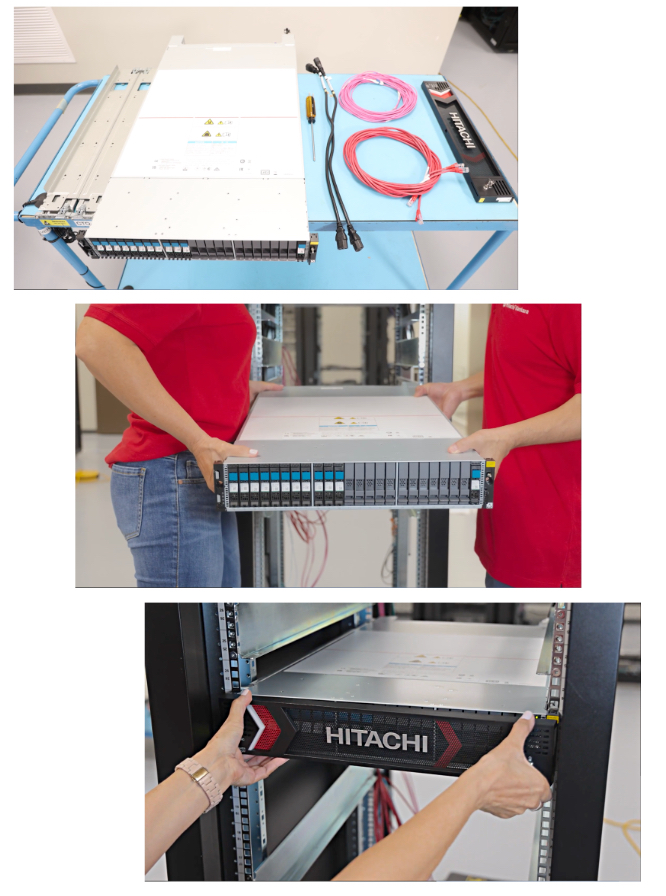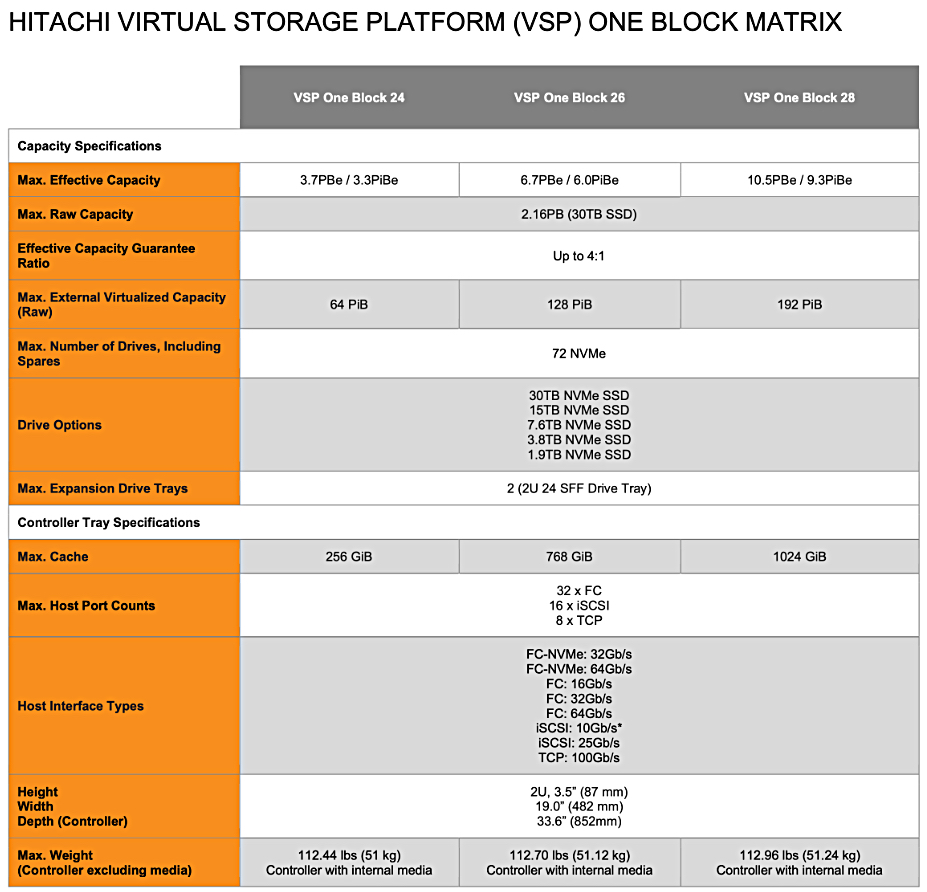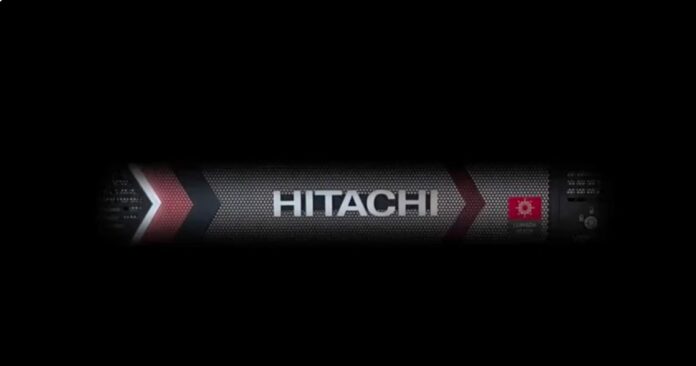Hitachi Vantara has launched a VSP One Block scale-out storage appliance for mid-sized biz.
Update. VSP One Block data multi-access protocol details, spec sheet, data sheet, images and installation video references added, 1 June 2024.
Hitachi V rebranded its storage portfolio of products to Virtual Storage Platform One in October last year, taking an HPE Alletra-like tack to overall brand conformity. Its portfolio included the VSP (Virtual Storage Platform) high-end (VSP 5000) and mid-range (E Series) block arrays, HNAS file storage, VSS (Virtual Software-defined Storage), and the HCP (Hitachi Content Platform) for object data. Specific VSP One products were launched earlier this year, comprising three products: SDS (Software-Defined Storage) Block, SDS Cloud and File, the old HNAS. The all-NVMe flash SDS Block supports up to 1.6PBe (effective capacity) in its 2RU chassis. SDS Cloud comes as an appliance, a VM or public cloud offering and will be available in the AWS marketplace. Ops Center Clear Sight provides cloud-based monitoring and management for these products.
VSP One Block is different from SDS Block in that, starting as a single all-flash appliance, it scales out to a 65-node cluster. The nodes operate Hitachi Storage Virtualization Operating System (SVOS) software, which can manage virtualized 3rd party arrays. SVOS supports block, file (NFS, CIFS/SMB) and S3 access protocols. A spokesperson told us: “You can run Block natively, then add File and HCP for Object. … All Block models are running SVOS, you layer Block with File together in a 5U solution. File is doing pass through to block so we now offer 4:1 data reduction no questions asked (no T&Cs nothing to sign up for, no exception! You don’t get 4:1 we make you whole on block and file) and 100 percent data availability. We also have one user GUI for consumption of block and file and cloud observability with analytics and sustainability on Clear Sight.”

Hitachi V’s Chief Product Officer, Octavian Tanase, newly recruited from NetApp, said in a prepared remark: “Our Virtual Storage Platform One Block appliance is powerful and dense, delivering the data processing and reliability that mid-sized businesses need while minimizing rack space and reducing power and cooling costs for a more sustainable datacenter environment.”
It “sets a new standard for storage performance.”
The VSP One Block is likely positioned to replace the existing VSP E Series. Hitachi V claims it has “breakthroughs in simplicity, security, and sustainability.” There are “three dedicated models providing businesses with a common data plane across structured and unstructured data in block storage, specifically designed to remove complexity, enhance data protection, and reduce carbon emissions.” The three variants are the VSP One Block 24, 26 and 28 – see the table below. These are claimed to optimize rack space while reducing power consumption and cooling costs, but without saying what these are being compared to.
Hitachi V positions VSP One Block as being suitable for AI needs, saying the rise of AI and connected technologies has led to an exponential surge in data volumes, as businesses expect the amount of data they use to double between 2023 and 2025. As a result, businesses, especially mid-sized organizations, are being forced to rethink how to build and scale their data architectures. Enter VSP One Block.

The products are designed to be self-installable and feature:
- Per-appliance 32TB effective capacity to maximum of 1.8 PB of effective capacity using the internal 24 drive slot in 2RU chassis.
- Hitachi Thin Image Advanced (TIA) snapshot software creates copies for decision support and software development, and “defends structured data against ransomware. Every volume can have up to 1,024 Safe Snaps taken, and the array supports up to 1 million Safe Snaps.
- Always-available production data copies for data protection, with TIA saving up to 90 percent of disk space by only storing changed data blocks.
- Pre-configured, including the creation of Dynamic Drive Protection (DDP) groups which replace traditional RAID groups, providing the resilience of RAID6 with distributed spare space and support for an arbitrary number of drives (from 9-32 per group). It supports adding drives one (or more) at a time. DDP dramatically lowers rebuild times.
- Dynamic Carbon Reduction technology reduces energy consumption by switching CPUs into eco-mode during periods of low activity.
- “Always on compression” allows the system to switch from inline data reduction to post-processing which reduces energy consumption and contributes to a lower CO2 footprint by as much as 30-40 percent.
- New, patented compression accelerator modules (CAM) with a new compression algorithm.
- 4:1 No Questions Asked data reduction guarantee.
- Management tools, including an embedded graphical user interface (GUI) and the intuitive SaaS-based Ops Center Clear Sight portal make it easy to manage and consume the storage.
- 100 percent data availability guarantee.
- FIPS 140-3 lvl 1 data at rest encryption automatically enabled from the distribution center for most customers
- Supports running cloud-native apps alongside traditional block workloads.
Hitachi V has released datasheets, and specsheets for the VSP One Block products, and there is an installation video here. Hint; it takes c30 minutes.

Hitachi, Hitachi Vantara and Google
Hitachi Vantara’s parent company, Hitachi, has just announced a multi-year partnership Google focused on generative AI. It will form the Hitachi Google Cloud business unit focused on offering business customers Gemini models, Vertex AI, and other cloud technologies, and it will also adopt Google Cloud’s AI to enhance its own products and services.
Hitachi’s new products will support customers running both on-premises and in the cloud, enabling them to modernize operations while retaining existing IT environments. They will also be compatible with VSP One, so that users can build GenAI applications using data stored on Hitachi Vantara’s hybrid cloud storage products.








